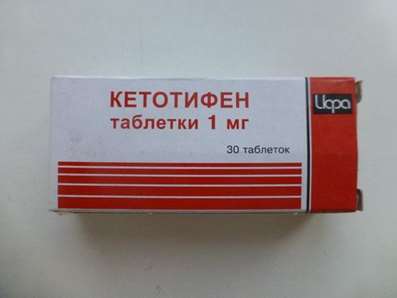Modern Theory of Insomnia
29 Dec 2016
Somnology Dr. Doping tells about the features of the structure of the brain and causes of insomnia.
Insomnia is a condition where a person has the ability to sleep, but can not. He could not sleep for a long time, tossing and turning from side to side, all sorts of thoughts come to prevent him from falling asleep, so-called rumination - obsessive thoughts. And then he goes to sleep again may wake up in the night and then not be able to sleep again for a long time spent in bed awake. He might wake up in the morning before the time when he did not even need to get up and lie awake, too. That is in insomnia symptoms can be very different, but they all relate to the difficulties or the initiation of the onset of sleep or staying asleep.
And even if a person slept like a sufficient amount of time, but in the morning he gets up unrefreshed, sleepy, it is also a manifestation of insomnia, it is complaints about the non-reducing sleep. Scientifically called insomnia insomnia (in - 'inside'; somnus - 'dream'), that is, those issues that arise within a dream. And now we really learned a lot about the condition. As previously presented, why develops insomnia syndrome? The most common was the idea that insomnia - it's just such a whim, that person behaves properly, he disturbed behavior, he jumps before going to bed, jumping, excited, worried and this can not sleep. Indeed, it happens most often in children there are such problems in teenagers who flirt on the computer.
But why should an adult, serious, responsible attitude towards their health, falls and can not sleep? Before going to bed, he is nothing reprehensible does not. On this question the theory of consumer insomnia did not answer. Other insomnia theory represents the other extreme, which is considered a violation of sleep as a manifestation of mental illness, that if a person does not sleep, it means that something from his psyche not: he either depression or anxiety disorders, and it's manifested in soon. And so often, in fact, doctors have tried to refer people with insomnia who came to him to complain about, just in case checked by a psychiatrist. Including why complaints of insomnia stopped, and people prefer not to talk about the fact that they have a sleep disorder, because they believe that then it will be regarded either as improper behavior, irresponsible attitude to his bed, or as a sign of something the mental illness.
So, on the one hand, that if conduct a survey of people in the general population, that is, each counter to ask if he had any sleep disorders or not, at least one in ten say that he has a sleep disorder that prevented him live in he has this insomnia. On the other hand, people with insomnia do not come to the doctor and do not complain, do not know who to come to, do not know what doctor can help. And gradually, this problem began to rise to a higher level of special. Neurologists, psychiatrists began to gather, discuss, whose disease is insomnia who it should be treated. Now it achieved a mutual understanding that insomnia - it's still the problem of the central nervous system, a problem that occurs in the brain, which is associated with behavioral disorders, a problem that often coexists with mental illness, but does not always mental illnesses cause insomnia.
What modern presentation, origin of the insomnia, insomnia? In order to understand this, it is necessary to go back to sleep theory. Why at some point in time we can go to sleep at some point in time we can not sleep? It depends on the constant interaction between the two main brain systems. One system is activated, it always maintains a sufficient level of wakefulness, several centers in the brain has to constantly tormoshat other neurons of the brain, forcing them to work at full capacity, if it is a day when you want the day constantly to solve some problems. That is such a tonic activation of the central nervous system activating centers. On the other hand, there are sleep centers, which are also not averse to take control of the brain, and all the time they are ready to take the brain control, but they do not give to make waking centers because waking centers during the day stronger, because they help to further the internal clock receiving the information from the retina. There is a nerve branch, which goes directly to the internal clock in the supra-hiazmene nucleus of the hypothalamus and every millisecond conveys information about the day or night, enough light or not.
The internal clock system helps awake during the day to maintain a sufficient level of activation, at least in humans. There are nocturnal animals, and they have the opposite. The fight takes place continuously between activating and inhibitory centers of the nervous system. When a person goes to bed and if at that time the street becomes darker, the internal clock activity decreases, they help activate the brain centers is also reduced and the sleep center at some point seize control of the brain. This ideally.
To improve sleep take: Afobazol, Selank and Phenibut.
There are many situations when activating the centers are too active. The modern idea of the possibility of the development of insomnia suggests that there is a group of people who have an innate feature, called hyperarousal - overactivation of the brain. They hyperactivation of this can be traced even in the daytime, not when they can not sleep at night, complained of insomnia, and even in the day of their brain is too active. This can be seen, for example, if you do EEG in such a group of people, they will have more so-called fast rhythms, beta rhythms in the EEG than in people who do not have insomnia. You can make it a special research technique called transcranial magnetic stimulation. It uses a powerful magnetic field, the magnetic field that stimulates the motor areas of the brain, and look how well these areas cause a motor response - often on the movement of the thumb.
It turned out that people with insomnia have a constant hyperactivation of virtually all areas of the brain, including those that like to sleep are unrelated to the thumb are related. This proves the presence of hyperactivity. And on the other indicators is actually also shown that insomnia is all too active in these people that they live initially with increased activation of that day helped them, in principle, because they respond better to changes in the external circumstances, faster can focus faster make the necessary response to some sort of reaction, but in the evening, when they go to bed, it begins to interfere with them, because they activate the brain centers hinder sleep centers in time to take control and return the body to sleep.
And when a person is trying to sleep, it is not possible because of the hyperactivity. Then have included secondary mechanisms maintain insomnia, and this is a different psychological factors. For example, a person lies down and gives himself the task immediately to sleep: I must urgently go to sleep, tomorrow morning to be cheerful, sleep. It seems to be nothing special, but when he gives himself such a task, it is already beginning to unconsciously track, he fell asleep and did not fall asleep. After some time, he can not fall asleep, he begins to worry about the fact that he did not fall asleep. From this he has cerebral activation, which is already high, increased even more, and it is even less may feel sleepy, even less, and the likelihood of falling asleep even further reduced. The man is excited, he begins to ask himself: "Why did not I fall asleep? I urgently need to go to sleep. " And the more he tries to drive himself to sleep, the less chance of falling asleep.
Academician Wayne, one of the pioneers of sleep studies in Russia, was very fond of the metaphor of the dream - it is a bird that sat on the open hand, and the faster you try to grab her, the faster it flies, because the more you strain to grasp the dream , the more activated by activating the system and hinder the development of the deceleration needed to sleep and occurrence of sleep. That is the man drives himself into this state. And gradually it is fixed, and in some even formed a habit or fear nezasypaniyu bed. When a person goes to bed at night, he does not think, fall asleep or he will not fall asleep, but when it comes to the bedroom, gets to the usual situation, then it triggers a conditioned reflex of Pavlov: pillow - the lack of sleep, like a dog call (call - it means food - a dog's saliva flowed). And here it turns out that he saw his pillow and his body immediately remembered the failure of the previous night, when he could not sleep. Accordingly, it is automatically developed hyperactivation which prevents sleep. This is one of the most common models, which explains why developing insomnia.
Now consider that there are people with a constant hyperactivation, and there are people without hyperactivity, insomnia develops them under other laws, and it is most commonly associated with the peculiarities of perception of time they spend awake at night. I wonder that anyone at night when asleep, in fact, not fully asleep, sometimes he wakes up, and that's fine. And, as it turned out, we did not wake up once during the night, not two, but 10-15 times a night because a man not to have pins and needles in one's arm his ribs, need from time to time in bed tossing and turning. This is completely normal. And when a person turns over in bed, in his brief awakening EEG recorded for 10-15 minutes. He wakes up at this time, it can at the same time to open his eyes, but he does not remember the next morning about it. But there are people who are too well all remember.
It is shown that there is a group of people who complain of sleep disturbances, despite the fact that sleep somehow they actually quite a lot. For example, now recommended by the international community duration of sleep - it is not less than seven hours to maintain a sufficient level of vigor, for a sufficient level of health. But if you spend a sleep study a man who complains about the dream, we also see that he 6-6.5 hours of sleep, but he could tell in the morning, which is not asleep. Why? He has changed the perception of their own sleep. He remembers those periods of sleep, or rather, those periods of wakefulness, when he was awake when he suffered, he looked at his watch as he listened to what was happening at the other end of the house, as there is neighbors move cupboard again in the night, but he absolutely does not remember when he fell into sleep. This feature of the perception of time at night.
There is a group of people who because of this developing complaints of insomnia, as they do not know how to properly take the time. They have periods when they wake up at night, merge in their perception. They wake up in the morning, they sure did not sleep, but in fact this is not true. Maybe they were sleeping a bit worse than other people, but slept enough. This so-called phenomenon pseudo-insomnia. There is a group of people who sleep unhappy - unhappy because they can not take the time. This is another cause of insomnia.
Another currently considered as one of the causes of congenital insomnia particular brain structure. When they began to carry out more complex neurophysiological studies (there is such a study - functional magnetic resonance imaging, which allows to determine not only the brain structure, but also its function, how well certain parts of the brain are working, for example, insomnia, and in healthy people (always compared with the control group, the control group - healthy people)), it was found that people with insomnia worse operate certain areas of the brain that are involved in the emotional evaluation of the situation. These areas of the brain are among the oldest areas, and they are called the orbitofrontal cortex areas, then there is the part of the cerebral hemispheres, which is adjacent to the eye sockets, hanging over the eye sockets.
It turned out that this is a very important part of the cerebral cortex, because it just is responsible for the inhibition of excessively overheated hazard assessment centers, so to speak. The temporal areas is the so-called the amygdala, which we need including to evaluate each stimulus, every action on the subject of it is dangerous for us or not. This amygdala responds to instantly evaluate the sound, the appearance of a new subject or to assess the danger to us some thoughts flashed in our minds. And it turned out that the amygdala is too much for insomnia, it is always ready to react to the danger, which is not even, she sees it as a threat. Why? Because patients with insomnia, this portion of the brain, the orbitofrontal cortex, is underdeveloped.
One of the most important functions of the orbitofrontal cortex is the inhibition of the amygdala unbelted, so that it did not perceive it as a danger to the body, the orbitofrontal cortex allows you to slow down time. And some people orbitofrontal cortex does not have time to slow down the amygdala to the right degree, the amygdala is constantly, day and night, provides alarms. In the afternoon, in principle, it does not interfere, as it may be, even helps to be always on the alert, always responsive to changes in the situation, the traffic situation, for example. And it is absolutely not necessary at night, do not react during the night, the brain has to deal with at night its internal affairs, change the ratio of neuronal weights, he does not have anything to respond. And it prevents this amygdala response, and develop again a symptom of insomnia when a person can not sleep, always alert, always responds to the sound of light.
Indeed, people with these disorders often say that as soon as night falls, for some reason, the neighbors start something there drilling, banging, moving, not because the other houses the neighbors do not knock, do not drill, do not move, but because people with this type of response excessive attention to all external stimuli. They hear even that healthy people do not even hear what's happening at the other end of the house. It is now the main theory of insomnia - the theory that insomnia is a heterogeneous group of states, and some of these conditions are caused by innate features is the organization of the nervous system. Either this function especially when there is a constant hyperactivation or hypoplasia is the orbitofrontal cortex, or psychology is, or it is the wrong assessment of the situation, incorrect assessment of the time.
There are a few other phenotypes of insomnia, which is not to have reached the hands of scientists, not formed a view. For example, the development of one of the types of insomnia associated with sleep insufficiency with dreams of REM sleep. It turned out that if a person is sleeping properly in a fast sleep, then he, too, violated anti-stress factor, the result of this is the development of a chronic sleep disorder, yet it has the REM sleep functions is defective. But this is a topic of conversation for the next REM sleep function.

 Cart
Cart





